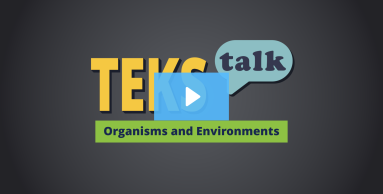- Science
- Grade 4
- Organisms and environments
Science.4.12.C
identify and describe past environment based on fossil evidence, including common Texas fossils.

Knowledge and Skills Statement
Research
Royce, Christine Anne. “Teaching through Trade Books.” Science and Children 42, no. 2 (October 2004): 22–24. http://www.jstor.org/stable/43173705.
Summary: Teachers can use children’s books to help teach students how scientists use fossils, including those found in Texas, to interpret plants and animals of the past. In this article, students need to start to understand what is considered evidence and how that evidence can be used to make explanations. The article outlines an activity for elementary students to help them understand how scientists use fossils to determine things about the past. Teachers should start by clarifying common misconceptions students have about fossils and animals that existed long ago. Students collect items such as twigs and leaves and use them to create casts and molds. Students can swap casts with others in their class and use their observation skills to determine what item the cast was made from.
